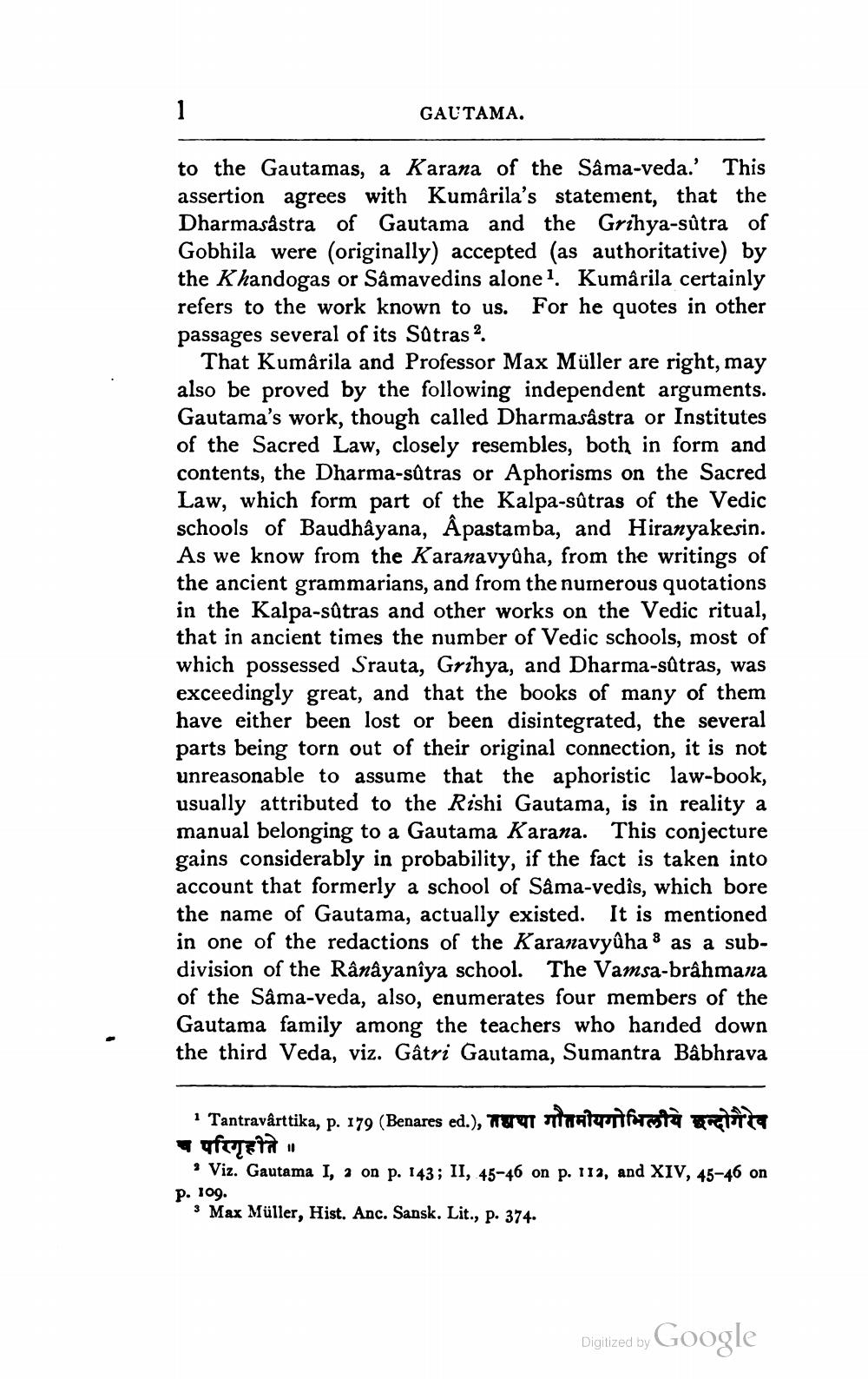________________
GAUTAMA.
to the Gautamas, a Karana of the Sâma-veda. This assertion agrees with Kumârila's statement, that the Dharmasastra of Gautama and the Grihya-sútra of Gobhila were (originally) accepted (as authoritative) by the Khandogas or Sâmavedins alonel. Kumârila certainly refers to the work known to us. For he quotes in other passages several of its Sätras?
That Kumârila and Professor Max Müller are right, may also be proved by the following independent arguments. Gautama's work, though called Dharmasastra or Institutes of the Sacred Law, closely resembles, both in form and contents, the Dharma-sútras or Aphorisms on the Sacred Law, which form part of the Kalpa-sûtras of the Vedic schools of Baudhầyana, Âpastamba, and Hiranyakesin. As we know from the Karanavyuha, from the writings of the ancient grammarians, and from the numerous quotations in the Kalpa-sútras and other works on the Vedic ritual, that in ancient times the number of Vedic schools, most of which possessed Srauta, Grihya, and Dharma-sútras, was exceedingly great, and that the books of many of them have either been lost or been disintegrated, the several parts being torn out of their original connection, it is not unreasonable to assume that the aphoristic law-book, usually attributed to the Rishi Gautama, is in reality a manual belonging to a Gautama Karana. This conjecture gains considerably in probability, if the fact is taken into account that formerly a school of Sama-vedis, which bore the name of Gautama, actually existed. It is mentioned in one of the redactions of the Karanavyûha 8 as a subdivision of the Rânâyanîya school. The Vamsa-brâhmana of the Sâma-veda, also, enumerates four members of the Gautama family among the teachers who handed down the third Veda, viz. Gâtri Gautama, Sumantra Bâbhrava
* Tantravârttika, p. 179 (Benares ed.), 1 mastupstforsta gradina च परिगृहीते ॥
· Viz. Gautama I, a on p. 143; II, 45-46 on p. 112, and XIV, 45-46 on p. 109.
3 Max Müller, Hist. Anc. Sansk. Lit., p. 374.
Digitized by Google




